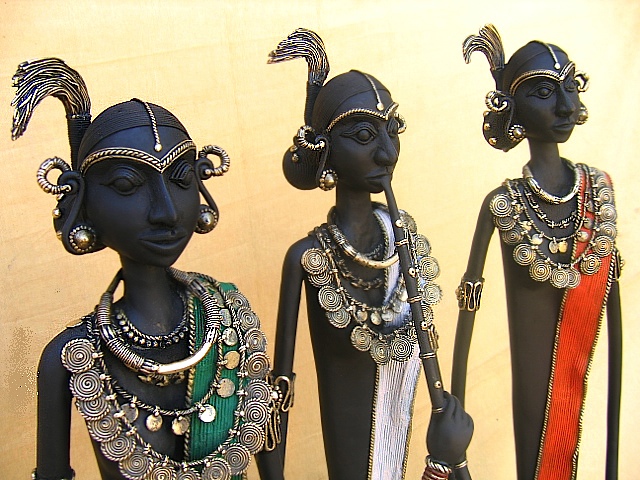BHUBANESWAR: Art is one of the few aspects which manifest the unique identity of a region. Such a form of art is Dhokra. Such works are made up of brass and scrap metal, making it eco-friendly in nature.
Dhokra motifs are inspired by ethnic folk culture. An imaginative use of design and pattern makes this form of art unique. It has evolved over thousands of years. Dhokra craftsmen are settled in the mineral rich central Indian belt of Odisha, Jharkhand, Chhattisgarh and parts of Andhra Pradesh. Orissa Post interacted with a few buyers as well as makers of this unique art to delve deeper into the subject.
Digbijay Santal, a dhokra figurine maker, said, “We use lost-wax process to cast hollow brass objects and images. A replica of the desired product is made with wax on a clay core, with all its finer details of designs and decorations. Brass scrap in generally used as raw material. Crafted out of metal through indigenous methods, the distinctive design and form of Dhokra craft reflects the inherent expression of their feelings. It was used for making jewellery and vessels to images of gods, goddesses, animals and birds.”
Smruti Nihar, a researcher of Dhokra art, said, “It’s fascinating to know how these figurines are made. Firstly, a mould is made with fine sand and clay followed by which cow and goat dung or husk is added to the main material, which is then encrusted with pure beeswax found in the jungle where the craftsmen reside. Wax threads are then prepared and wound around the clay mould until its entire surface is enclosed evenly. Finally, decorative aspects of the work are added.”
This is followed by the cooking of clay on a blast furnace while the wax is drained via ducts. The furnace is built above the ground with bricks and natural fuel (charcoal, cow dung or coal). The wax burns in the furnace leaving a free channel for the metal to flow. Molten metal (mainly brass and bronze) is poured inside the mould. The moulds are taken out after the metal has melted, and water is sprinkled to cool them. They are then broken and the cast figures are removed. The portions are retouched and are meticulously scoured at the river with clean sand to give the products a soft polished look. Normally, a simple figurine could take anywhere between fifteen to thirty days to be complete.”
Ashwini Digbijay, a homemaker and resident of Sailashree Vihar who happens to be an ardent fan of Dhokra art, said, “Tribes from central India have been making their own religious figures, ornaments and kitchenware visible through Dhokra art. I have been travelling widely in such of this unique work.”
Shreemoyi Uttam, a city based interior designer, said, “Recently I have decorated one of my clients’ Puja room with a massive Dhokra art on Maa Durga. The figurine is breath-taking and my client is delighted with my choice.”

